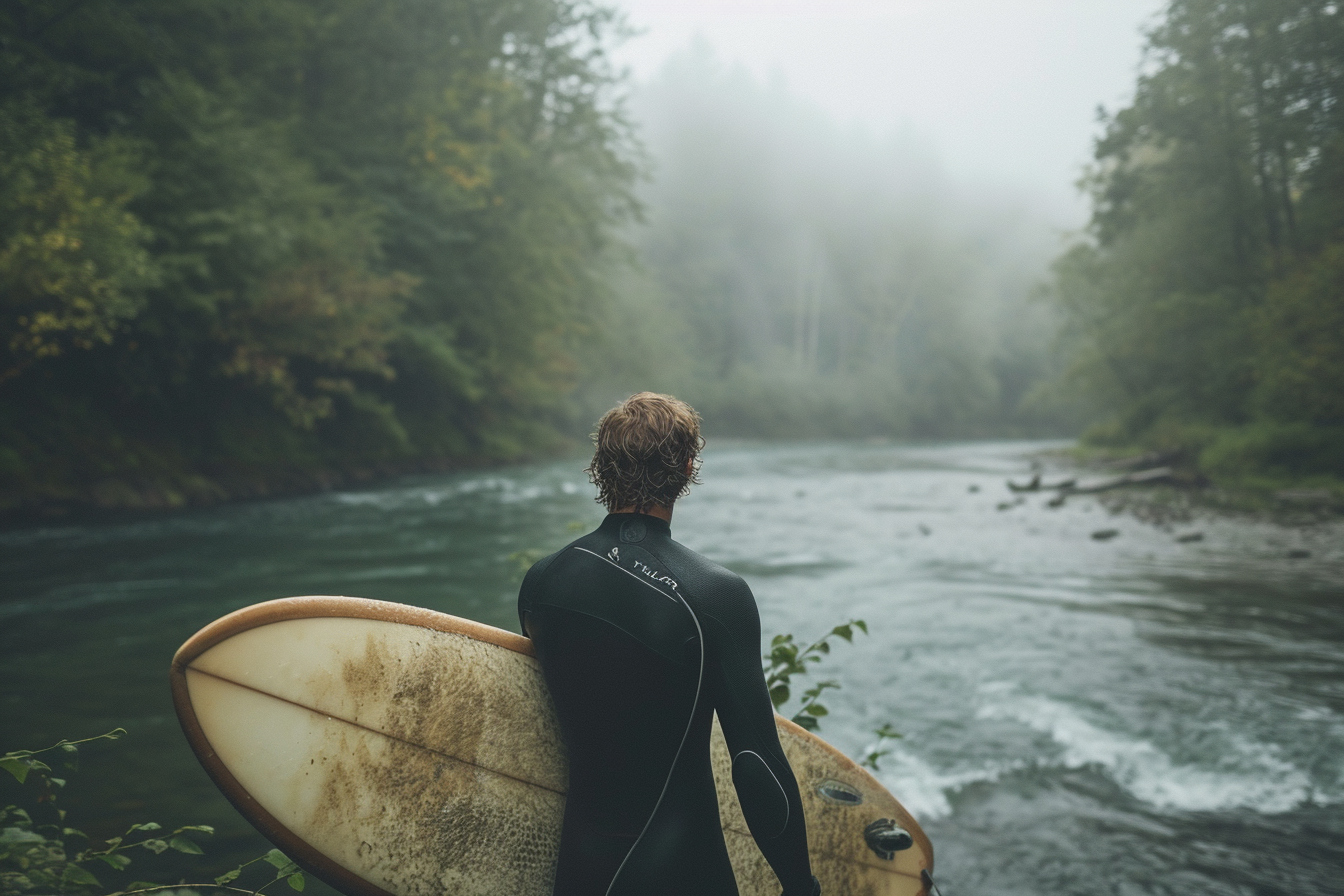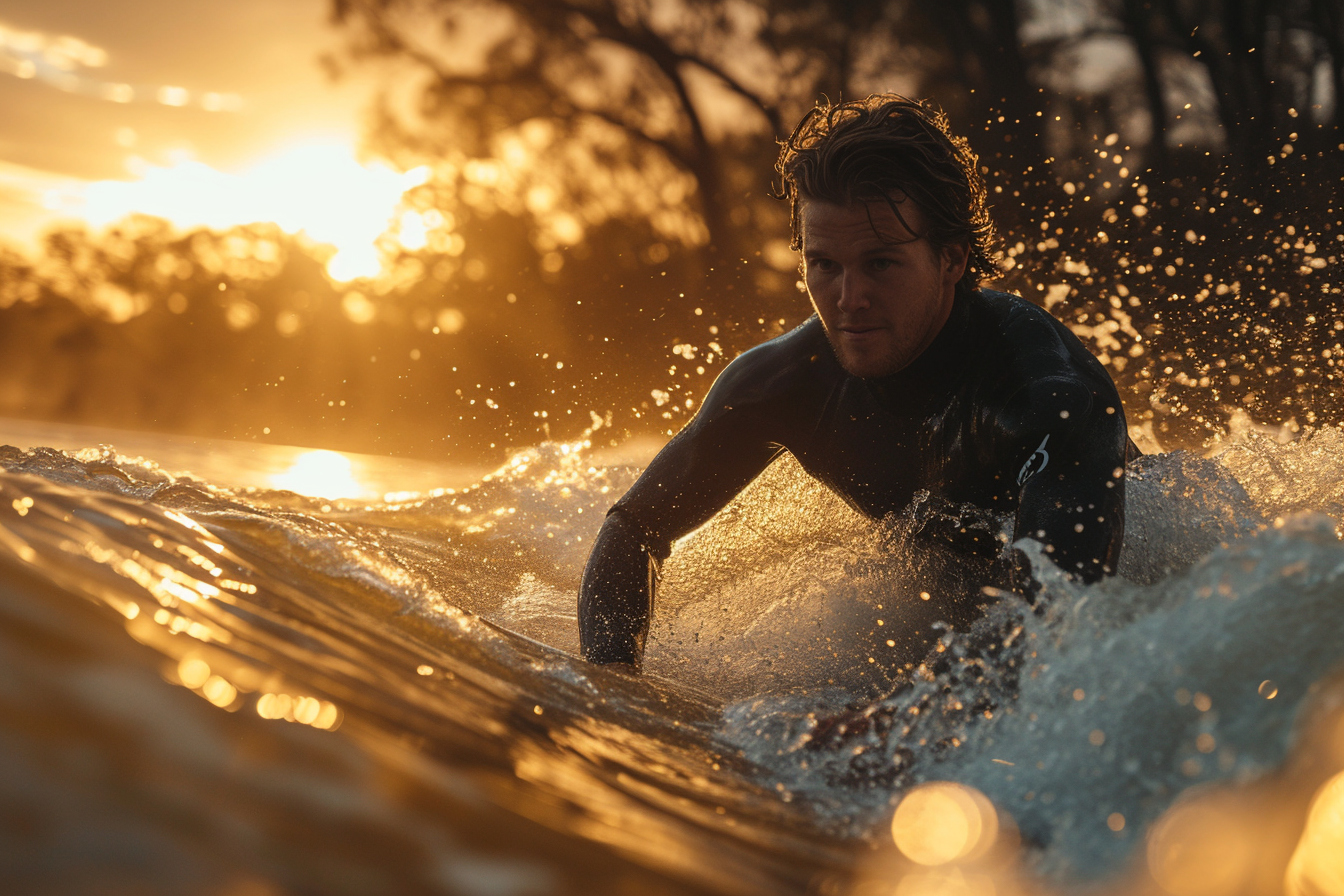River surfing, the exhilarating activity of catching waves created in river streams, is rapidly gaining popularity as an unconventional yet thrilling spin on traditional surfing. The dynamic interplay of currents, rocks, and wave formations offers a unique surfing experience, quite distinct from ocean surfing.
Understanding river surfing
Before you embark on your river surfing journey, it’s crucial to understand what sets this sport apart. River waves are formed by a large volume of water accelerating and being forced over a rock or other objects, creating a static wave. Unlike ocean waves that travel and break on the shore, river waves stay in one place, allowing surfers to ride them for an extended period of time if they can maintain their balance.
The dynamics of a river wave
River waves can be classified as either standing waves or hydraulic jumps. A standing wave is formed when water flows over an obstruction at the right speed and depth, causing the water to fold back over itself. A hydraulic jump occurs when rapid moving water transitions into slower moving deep water creating a distinct wave.
Types of river waves
- Green Waves: Smooth and glassy, these waves are the dream of every river surfer, offering a stable surface to show off technical skills.
- Hole Waves: More turbulent and unpredictable, hole waves can be more difficult to master but equally rewarding for the more experienced surfer.
Preparing for your river surfing expedition

Gear selection
The right equipment significantly influences your river surfing success and safety. Surfboards designed for ocean waves might not be suitable for the river; river surfboards are often shorter, thicker, and more durable to withstand the impact of rocks and strong currents.
Essential river surfing gear
- River Surfboard: Specially designed to be buoyant and responsive to the river’s dynamic.
- Wetsuit: A good quality wetsuit that can provide warmth in cold river waters.
- Helmet: Offers essential protection against rocks and other hazards.
- Life Jacket: Increases buoyancy and is a safety must-have for all river surfers.
- Leash: Keeps your board attached to your body, preventing it from floating away.
Safety considerations
Navigating a river’s capricious nature is not without its risks. Swift currents, unseen underwater obstacles, and variable water levels all play a part in river surfing’s inherent danger. Ensuring you are well-informed about river safety is paramount:
- Know Your Stretch of River: Familiarize yourself with the area where you intend to surf, noting emergency exits and potential hazards.
- Never Surf Alone: Always have a buddy with you, both for the joy of shared experience and for safety.
- Take a Swift Water Rescue Course: This can be invaluable in understanding river dynamics and how to react in emergency situations.
Physical fitness
River surfing demands robust physical strength and endurance to paddle against the current, maintain balance on the dynamic wave, and recover from falls. A well-rounded fitness regimen including cardio, strength training, and balance exercises is highly beneficial to any aspiring river surfer.
The art of catching a river wave

Finding your spot
The first and most fundamental step is to find the sweet spot where the wave breaks consistently. It’s usually near the strongest flow of current, just behind the rock or object creating the wave. Positioning yourself correctly could mean the difference between a successful ride and getting washed downstream.
Paddling into the wave
This might be counterintuitive for ocean surfers, but the goal in river surfing is to paddle into the wave from downstream. The technique is to angle your board so that you hit the wave at its peak, allowing the current to push you onto the wave’s face.
balancing
Once you’re on the wave, the challenge is to balance on the constantly shifting surface. Your center of gravity should be lower, with your knees bent and your weight over the board.
Turning and maneuvering
Mastering turns on a river wave requires practice and patience. Beginners should start with simple back-and-forth movements to get a feel for the wave’s power. As you gain confidence, you can try carving sharper turns and eventually tricks or aerials.
Progression in skills and technique
River surfing involves an ongoing learning process, with each session providing an opportunity to hone your craft.
Starting with the basics
It’s essential to become comfortable just standing on the wave before attempting more complex maneuvers. Focus on controlling your board and stabilizing your stance.
Practice makes perfect
Repetition is key. Spending time on the water is the best way to improve. Each fall teaches you something new about how to maintain your balance and where to position yourself on the wave.
Watching and learning
Observing others can be incredibly instructive. Pay attention to how experienced river surfers approach the wave, where they stand on their boards, and how they maintain control in turbulent waters.
Constructive criticism
Constructive feedback from fellow surfers can help you adjust your technique and overcome any sticking points you might encounter on your river surfing journey.
The river surfing community
Being part of the river surfing community not only enhances the joy of the sport but is also an excellent way to learn and stay informed about safety, gear, and local river conditions. Engaging with other surfers can offer insights and tips that might take much longer to learn on your own.
Connecting with local surfers
Local surf communities are instrumental in getting acquainted with the intricacies of a particular river. They provide real-time updates on conditions and safety, not to mention the camaraderie found in shared passions.
Contributing to the scene
As you develop your skills, consider giving back to the community that helped you get started. This could be in the form of mentoring newcomers, participating in river cleanups, or advocating for the protection of the waterways.
Events and competitions
Attending river surfing competitions, whether as a spectator or a participant, exposes you to the sport’s competitive aspect, showcasing the high skill level and innovation within the sport.
Advanced techniques and innovations
As you progress from a novice to an intermediate and advanced river surfer, experimenting with different techniques and board designs can electrify your experience.
Tricks and aerials
From basic tricks like 360-degree spins to advanced aerials, expanding your repertoire of maneuvers adds a new level of excitement to river surfing.
Custom equipment
Tailoring your board and gear to suit your style and abilities can result in significant improvement in performance. This might entail working with surfboard shapers who specialize in river surfing boards or customizing your own.
Exploring new river spots
Seeking out new river waves challenges your adaptability and broadens your experience. Each river wave has its unique characteristics, vastly different from an ocean wave and often distinct from other river waves as well.
The future of river surfing
River surfing continues to evolve, with technological advancements leading to better equipment and more accessible waves. Artificial river waves and parks are beginning to surface, offering consistent and safe environments for surfers to practice and perfect their techniques.
Environmental consideration
The sport’s future is also tied to environmental health. Preserving river ecosystems is integral to maintaining the natural waves that provide this dynamic surfing environment. Active participation in conservation efforts not only benefits the planet but ensures the longevity of river surfing spots for future generations.
Technological advances
From improvements in wetsuit technology to advancements in surfboard materials and designs, staying abreast of the latest developments can enhance your performance and safety in the river surfing realm.
Community growth
As the sport grows, so does its community. The increase in awareness and popularity could lead to more structured training programs and the development of river surfing as a recognized competitive sport.
River surfing offers a fresh and thrilling perspective on the ancient art of wave riding. It combines the challenge of mastering a dynamic natural force with the reward of an intimate connection to the river environment. As with any sport, success in river surfing is a balance of knowledge, skill, and respect for nature’s power. Whether you’re gliding on a green wave or navigating the tumultuous waters of a hole wave, river surfing promises an adventure like no other. To debut in river surfing is to open oneself up to a world where each wave is not an end but rather a gateway to an endless river of possibilities.